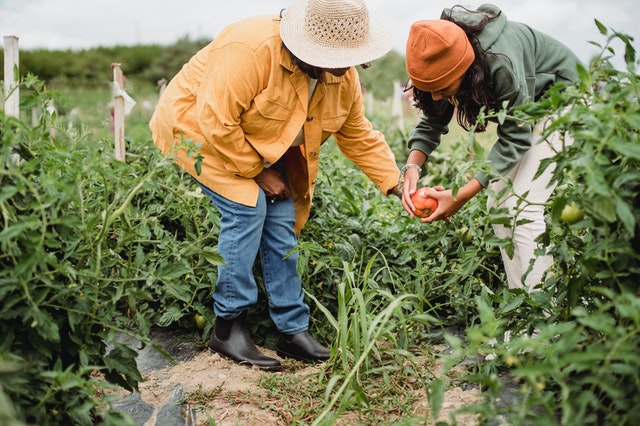We live at a time where everybody is conscious about what they eat. People want to eat a balanced diet with vegetables and fruits. Furthermore, most people want their vegetables to be fresh. Since companies may use chemical methods to preserve vegetables, consumers don’t trust such groceries.
This means that the best possible way to guarantee the quality of vegetables that you buy is by growing them at home. If you have a backyard, you can plant your vegetables there.
Apart from providing you with a credible source of food, your backyard garden also helps you save money – you no longer have to buy vegetables.
If you are new to vegetable gardening, below is a step-by-step guide on how you can prep your yard and plant the vegetables that you need in your household:
1. Find the Right Spot
When it comes to a vegetable garden, getting the right space is everything. The best spot receives at least 6 hours of sunlight daily. The vegetables will need sunlight to grow. You also have to monitor the different patterns of sunlight and shadows and ensure that your garden is at least 10 feet from your house.
You should also choose a level-ground so that water doesn’t wash away the good soil. A level surface also makes sure that the soil absorbs water well.
2. Pick your Vegetables
The main purpose of a home garden is to feed your family. Because of this, you need to know the type of vegetables that you or your family likes to eat. You shouldn’t plant what you won’t eat because that’s wastage of space.
The type of vegetables that you choose for your backyard garden also depends on the weather. It’s best to do your gardening during the rainy season because it allows your vegetables to get sufficient water. If it’s your first time gardening, you can start with some easy vegetables such as coriander, carrots, beans, and lettuce.
3.Soil Preparation
Different types of soils will contain different amounts of nutrients that are naturally absorbed by crops as they stretch-out their roots. You can buy soil testing kits from Agrilabour VIC to see how healthy your backyard soil is.
In case your soil lacks important nutrients, you can add some fertilizer before your plant any vegetables.
4.Start with Flowers
After you’ve prepared your soil, start by planting flowers on the outside of the main garden area. You have to do this so that you can attract bees to your garden.
There are some vegetables, like cucumbers and pumpkins, which need bees to pollinate them so that the fruits can develop.
5.Plant with a Plan
Every crop growing cycle may vary depending on the species of the plant and the season of growth. This is a clear indication that you’re not supposed to plant all the seeds at the same time.
In order to plant the vegetables well, you’ll need to first study and comprehend the conditions for each vegetable. Then, prepare a gardening schedule. That way, you’ll know when to plant certain vegetables.
6.Doing the Actual Planting
Different crops have various soil depth and spacing recommendations. You can ask a professional gardener about these specifications or do your research.
However, most crops will grow well with a spacing of about 3-5 inches and a depth of 0.25-1 inch.
7.Frequent Watering
If you didn’t plant your vegetables during the rainy season, you may have to water them frequently. This is because plants also need water to grow.
Throughout the growing season, you’ll need to spray the soil with water to keep it moist. Gardening appliances like sprinklers can be very useful if you won’t be around to water the plants all the time.
8.Weeding
As long as the soil is good, other plants are likely to grow in your vegetable garden. We refer to these plants as weeds. Since your backyard garden is a small space compared to a large farm, it may not be advisable to use chemical methods to try to get rid of the weeds.
The best way to get rid of them is to remove them by hands. Getting rid of weeds is essential since they compete with your vegetables for water and nutrients and prevent their growth.
9.Protect your Vegetables
After you’ve planted your vegetables and watered them, you’ll need to protect them from animals. Build a fence around your backyard garden for the best protection. Let the fence be buried at least 6 inches below the ground so as to prevent rabbits from digging their way into the garden.
You can also use pest-control chemicals to deter smaller insects from attacking your crops. Visit your garden every once in a while and collect any insects or caterpillars that you may see on your vegetables. Put them in a bucket and throw them far away from your backyard.
10.Harvest
Harvesting is a gradual process that can take place in days or even weeks. The good thing about most vegetables is that you can harvest them more than once. The general rule when harvesting vegetables is that if it looks okay to eat, you can pick it.
For those vegetables that have a hard outer shell, you can harvest them if the fruits look big enough to harvest.
Conclusion
The best way to guarantee that the vegetables you eat are fresh and safe for consumption is to plant them yourself. Use the above tips if you are new to gardening. They will help you avoid common planting mistakes and make sure that your vegetables mature well.

